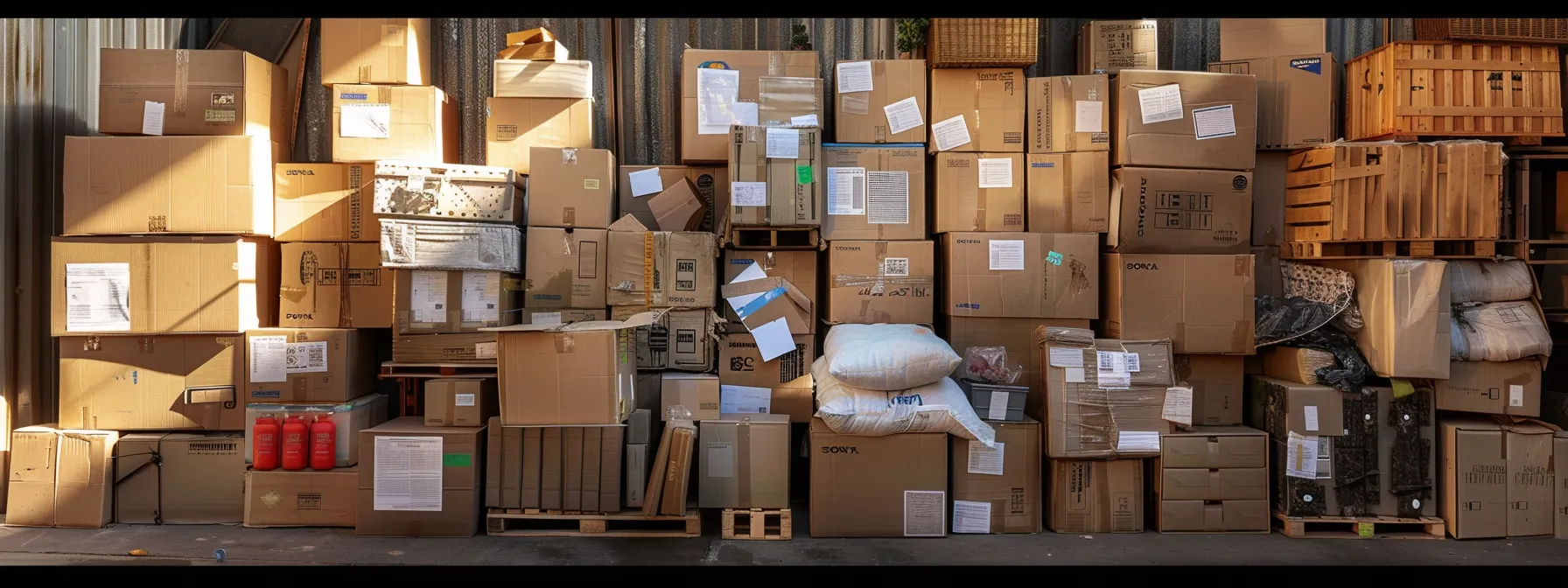Table Of Contents:
- Comprehensive Guide to Pre Move Planning for Hourly Local Moves
- Understanding Hourly Rates for Local Moves
- How Hourly Moving Rates Work
- Factors Influencing Hourly Costs
- Estimating the Time Needed for Your Move
- Comparing Hourly vs. Flat Rate Pricing
- Creating an Effective Pre-Move Plan
- Creating an Effective Pre-Move Plan
- Setting a Moving Timeline
- Decluttering and Organizing Belongings
- Scheduling With Your Moving Company
- Preparing Essential Documents
- Efficient Packing Strategies for Hourly Moves
- Gathering Necessary Packing Supplies
- Packing Room by Room
- Labeling Boxes for Easy Identification
- Packing Fragile Items Safely
- Preparing Large Furniture for Transport
- Tips to Minimize Time and Costs
- Disassembling Furniture Before Movers Arrive
- Ensuring Easy Access for Moving Trucks
- Communicating Special Instructions Early
- Preparing Appliances for the Move
- Choosing the Right Local Movers
- Choosing the Right Local Movers
- Researching Moving Companies
- Reading Reviews and Testimonials
- Verifying Licenses and Insurance
- Getting Detailed Quotes
- Understanding Contract Terms
- Preparing for Moving Day
- Confirming Details With Your Movers
- Setting Aside Essentials for Immediate Use
- Managing Pets and Children on Moving Day
- Final Walkthrough and Checklist
- Handling Last-Minute Issues
Comprehensive Guide to Pre Move Planning for Hourly Local Moves
Moving can often feel overwhelming, especially when you have to manage costs and time. Did you know that preparing effectively for an hourly local move can significantly reduce your overall fees? In this guide, I’ll cover essential strategies such as understanding hourly rates for local moves, creating a detailed pre-move plan, and packing efficiently to minimize transport time. By the end, you’ll have the knowledge you need to ensure a smooth moving day with your chosen professional mover, ultimately saving you money and reducing stress. Let’s dive in and tackle the moving challenges together.
Understanding Hourly Rates for Local Moves

Understanding hourly rates for local moves is crucial for effective pre-move planning. I will explain how hourly moving rates work, outline the factors that influence these costs, and help you estimate the time you’ll need for your move Flat Rate Moving. I’ll also compare hourly pricing to Junk Removal Services options so you can make an informed decision while considering potential tax deductions related to moving expenses.
How Hourly Moving Rates Work
Hourly moving rates are calculated based on a per-minute model, ensuring transparency in how much you pay for each part of your move. This approach helps me to provide you with an accurate estimate aligned with the number of bedrooms in your home and the time it takes to complete various tasks. Unlike fixed rate options that might not account for unexpected delays or additional services, hourly rates allow you to adjust your moving strategy as we go, allowing you to remain compliant with your budget while adapting to on-the-ground realities:
- Understanding the per-minute pricing structure
- Assessing the impact of the number of bedrooms on moving time
- Adjusting your move plan as needed
- Weighing hourly rates versus fixed rate options
Factors Influencing Hourly Costs
Several factors can influence the hourly costs of your local move, impacting the overall budget. The distance between locations, the amount of items to be moved, and any unique challenges on-site, such as an attic or difficult access points, can significantly affect the time needed for the moving crew to complete the job. Additionally, if your household includes dangerous goods that require special handling or disposal, this may result in additional costs to ensure safety and compliance.
- Distance and route complexity
- Amount of items to be moved
- Access challenges (e.g., stairs, attic)
- Special handling for dangerous goods
- Size and experience of the moving crew
Estimating the Time Needed for Your Move
Estimating the time needed for your move is vital for managing your budget and ensuring a smooth process. I recommend considering factors like the number of rooms and the volume of items, as these greatly influence the price you’ll pay per hour. Understanding your rights and reviewing resources from organizations like the Better Business Bureau can also enhance your consumer protection, ensuring that you choose a reliable moving service to handle your possessions with the appropriate replacement value coverage.
Comparing Hourly vs. Flat Rate Pricing
When comparing hourly and fixed rate pricing for local moves, it’s essential to consider the specific needs of your situation. For instance, if you’re moving items from a basement or navigating tight spaces, the hourly rate might be more flexible, allowing you to adapt to any challenges that arise. Conversely, fixed rates can provide peace of mind by locking in a price regardless of weight or vehicle use, but they might not account for unforeseen delays, which could lead to disputes best resolved in small claims court. Ultimately, understanding these options helps you decide the most cost-effective approach for your move.
Knowing how much the move will cost is important. But a good plan before the move can make all the difference.
Creating an Effective Pre-Move Plan

Creating an Effective Pre-Move Plan
Setting a clear moving timeline is essential for a successful moving day. I recommend decluttering and organizing your belongings to streamline the process, making it easier for the moving crew. Scheduling your services with the moving company ensures they’re prepared and you’re not caught off guard. Don’t forget to prepare essential documents, such as the bill of lading and cash for any last-minute expenses or moving container rentals.
Setting a Moving Timeline
Setting a moving timeline is crucial for coordinating your move effectively. I recommend beginning the planning process at least a month in advance to give yourself ample time to connect with a moving company and obtain a moving quote that reflects your unique needs. By scheduling moving services early, you can ensure availability and potentially discover deductible options that may alleviate some of the costs associated with the higher cost of living in your new area.
| Timeline Phase | Action Item | Notes |
|---|---|---|
| 4 Weeks Before | Contact Moving Companies | Gather quotes and book services. |
| 3 Weeks Before | Begin Decluttering | Donate or sell items no longer needed. |
| 2 Weeks Before | Pack Non-Essentials | Leave out only what is necessary for daily life. |
| 1 Week Before | Finalize Moving Details | Confirm arrangements with the moving crew. |
| Moving Day | Ensure Accessibility | Have cash ready for last-minute expenses. |
Decluttering and Organizing Belongings
Decluttering and organizing my belongings before a move is one of the most effective ways to streamline the process and reduce moving costs, especially when I’m charged by the hour. In busy places like New York City, every pound counts, and eliminating items I no longer need not only lightens my load but can also have tax implications if I donate them and claim the deduction. By creating an inventory of my possessions as I sort through them, I ensure that I only take what’s necessary and make my moving day much more manageable:
- Identify items to keep, donate, or discard.
- Create an inventory list for easy tracking.
- Consider potential tax deductions for donated items.
- Stay organized to save time on moving day.
Scheduling With Your Moving Company
When scheduling with your moving company, it’s essential to communicate your specific needs regarding accessibility and any unique challenges, such as stairs or tight entryways. I recommend obtaining a written estimate that outlines all costs involved, ensuring that you have a clear understanding of any additional charges that might arise from your move. This proactive approach helps to alleviate any potential issues and ensures that the moving crew from companies like United Van Lines is well-prepared for the job ahead:
| Action Item | Details |
|---|---|
| Communicate Accessibility Issues | Discuss any stairs or access points with the moving company. |
| Request a Written Estimate | Ensure all potential costs are clearly stated. |
| Schedule Confirmations | Double-check arrangements a week before the move. |
Preparing Essential Documents
Preparing essential documents before my move is crucial for ensuring a smooth process and addressing any potential challenges. I always make sure to have my lease agreement organized, as this provides clarity on move-in dates and rental terms. Additionally, I keep a copy of the moving company‘s valuation options handy, which protects my belongings during transit. Lastly, tracking moving expenses is important for budgeting and potentially claiming deductions later, especially if I plan to use self-storage temporarily to bridge the gap between homes. Properly preparing these documents helps streamline communication with customer service and minimizes stress on moving day.
A solid plan sets the stage for a smooth move. Next, I’ll share packing strategies that keep you quick and efficient, ensuring you make the most of every hour.
Efficient Packing Strategies for Hourly Moves

I will cover essential packing strategies to minimize moving costs and streamline the process for hourly local moves. First, I’ll outline how to gather necessary packing supplies and tackle packing room by room. Next, I’ll discuss the importance of labeling boxes for easy identification, packing fragile items safely, and preparing large furniture for transport. By following these insights, I’ll ensure my household goods are organized and protected during the move.
Gathering Necessary Packing Supplies
Gathering necessary packing supplies is crucial for a successful move that adheres to local regulations and avoids unexpected costs. I make sure to collect quality boxes, packing tape, bubble wrap, and markers to label each box, which helps organize my belongings efficiently. Understanding the average cost of packing materials can also assist in budgeting for the move, especially when considering the time spent packing per hour; it’s essential to be prepared for any challenges, such as needing to navigate through an elevator or dealing with tight spaces, to streamline the process and minimize delays.
Packing Room by Room
Packing room by room not only simplifies the moving process but also helps keep track of my belongings, which is essential when budgeting for moving costs. I prioritize packing non-essential items first and focus on one room at a time, which allows me to maintain organization and reduce potential loss and damage during transit. Statistics show that structured packing can result in significant time savings, and by working methodically, I can communicate efficiently with moving companies, ensuring that every item is accounted for and that I adhere to the agreed-upon tariff for an hourly rate.
Labeling Boxes for Easy Identification
Labeling boxes effectively is a helpful strategy that greatly simplifies the moving process. I always make it a point to document the contents of each box clearly, indicating not just what’s inside but also marking which room it belongs to. This practice is particularly beneficial when using Local Moving Services, as it allows the moving crew to handle our items more efficiently, reducing the time needed for packing and unpacking—critical when working with an hourly rate. Whether it’s for residential moves or Commercial Moving Services, taking the extra step to create organized labels cuts down on confusion and ensures a smoother transition into the new space.
Packing Fragile Items Safely
Packing fragile items safely is vital to preventing damage during your move. I always use sturdy boxes and wrap delicate belongings in protective materials like bubble wrap or packing paper to cushion them. When utilizing Moving Labor Services, I recommend clearly labeling these boxes as “fragile” to ensure the moving crew handles them with care. Additionally, considering Moving Insurance is essential for safeguarding high-value items, as it provides peace of mind knowing that you’re covered in case of unexpected damage. It’s also beneficial to research the Federal Motor Carrier Safety Administration guidelines, which provide useful information on protecting your possessions during transport and understanding your rights regarding moving services.
Preparing Large Furniture for Transport
Preparing large furniture for transport is essential to ensure a safe and efficient move. I carefully dismantle items like beds and bookshelves to make them easier to handle and fit through tight spaces. Wrapping these pieces in moving blankets helps protect them from scratches and damage during transit; this step is key, especially when using an hourly moving service where every minute counts.
Here are my recommended steps to prepare large furniture for transport:
| Action Item | Details |
|---|---|
| Dismantle Furniture | Take apart items when possible, such as removing legs from tables. |
| Protect with Blankets | Wrap furniture in moving blankets to avoid scratches and damage. |
| Label Parts | Keep screws and small parts in labeled bags to make reassembly easier. |
| Use Proper Lifting Techniques | Lift with my legs, not my back, to avoid injury when moving heavy pieces. |
Every box packed wisely saves you time and money. Let’s look at how to cut both even further.
Tips to Minimize Time and Costs

Disassembling furniture before the movers arrive can significantly decrease the time and costs associated with your local move. Ensuring easy access for moving trucks is essential to avoid delays. I also stress the importance of communicating any special instructions early on and adequately preparing appliances for transport, as these steps streamline the moving process and make my experience more efficient.
Disassembling Furniture Before Movers Arrive
Disassembling furniture before the movers arrive is a straightforward yet effective strategy to minimize both time and costs during an hourly local move. I’ve found that taking apart larger items like beds, tables, and bookshelves not only makes them easier to transport but also saves valuable minutes on moving day. By organizing the screws and parts in labeled bags, I can facilitate a smoother reassembly process in my new home, ensuring that the moving crew can focus on efficiently packing and loading my belongings rather than wasting time on disassembly.
Ensuring Easy Access for Moving Trucks
Ensuring easy access for moving trucks is essential to streamline your local move and minimize hourly costs. I always check for parking regulations in my area and make necessary arrangements, such as reserving a parking spot or clearing any obstacles that could hinder the moving crew‘s progress. This proactive approach saves valuable time, allowing the movers to focus on loading and unloading efficiently.
| Action Item | Details |
|---|---|
| Check Parking Regulations | Verify any restrictions in your neighborhood or building. |
| Reserve Parking Spot | Arrange for a designated area near your residence. |
| Clear Obstacles | Remove any items, vehicles, or debris that could block access. |
| Communicate with Movers | Inform the moving crew of access points and challenges ahead of time. |
Communicating Special Instructions Early
Communicating special instructions early with your moving crew can significantly enhance efficiency and minimize costs during your hourly local move. I always make it a priority to inform the movers about any unique challenges, such as narrow hallways or specific items requiring special care. This proactive communication allows the moving team to prepare adequately, ultimately saving time and reducing the likelihood of unexpected delays on moving day:
| Action Item | Details |
|---|---|
| Identify Challenges | Discuss any access issues or special handling requirements upfront. |
| Provide Clear Instructions | Ensure movers understand your preferences for packing and loading. |
| Confirm Understanding | Ask for a recap of special instructions to ensure clarity. |
Preparing Appliances for the Move
Preparing appliances for the move is essential to ensure safety and efficiency, especially when working with hourly local moving services. I always start by unplugging and cleaning my appliances at least a day before the move, allowing any residual moisture to dry. This not only helps protect my belongings but also speeds up the moving process since the movers can load appliances without delays or concerns about spillage:
| Action Item | Details |
|---|---|
| Unplug Appliances | Disconnect all appliances a day prior to the move. |
| Clean and Dry | Wipe down appliances and allow them to dry thoroughly. |
| Secure Parts | Remove and label any loose parts or accessories to avoid loss. |
| Check Fuel Levels | For gas appliances, make sure to check and empty fuel tanks where necessary. |
Even with the best plans, the right movers can make all the difference. Choosing local movers who understand your needs can turn a stressful day into a smooth experience.
Choosing the Right Local Movers

Choosing the Right Local Movers
Researching moving companies is essential in finding a reliable partner for your local move. I will discuss the importance of reading reviews and testimonials, verifying licenses and insurance, obtaining detailed quotes, and understanding contract terms. Each of these steps ensures that I select a trustworthy moving service that meets my needs while providing peace of mind during the relocation process.
Researching Moving Companies
Researching moving companies is the first step I take to ensure a successful and stress-free local move. I always begin by reading reviews and testimonials from past clients, as this gives me insight into the reliability and professionalism of the moving service. Additionally, verifying that the company has the necessary licenses and insurance helps me feel confident that my belongings are in safe hands.
- Read reviews and testimonials for insights on reliability.
- Verify licenses and insurance for peace of mind.
- Request detailed quotes to understand pricing structures.
- Review contract terms to avoid hidden fees.
Reading Reviews and Testimonials
Reading reviews and testimonials from previous clients is a crucial step in choosing the right local movers for your upcoming hourly move. I make it a priority to search for feedback on the company’s service quality, reliability, and efficiency, as this gives me a better understanding of what to expect. Positive reviews not only affirm the movers‘ commitment to customer satisfaction but also highlight any potential red flags that might affect my moving experience, allowing me to make a more informed decision for my relocation needs.
Verifying Licenses and Insurance
Verifying licenses and insurance is a critical step when selecting local movers for your hourly move. I always check that the moving company has the appropriate licenses required by state regulations. This not only ensures that they are operating legally but also signifies that they adhere to safety and quality standards. Additionally, confirming that the company carries adequate insurance protects me in case of any damage to my belongings during the move. This gives me peace of mind knowing my items are covered, so I can focus on settling into my new home:
- Check state regulations for moving company licenses.
- Confirm that the company has insurance coverage for your belongings.
- Request documentation from the movers for verification.
Getting Detailed Quotes
Getting detailed quotes is a crucial step when selecting the right local movers for your hourly move. I always ask potential moving companies to provide a comprehensive estimate that includes all potential costs, such as labor, mileage, and any additional services I might need. This transparency allows me to compare options effectively and prevents unexpected expenses from arising on moving day, ensuring I stay within my budget while receiving the quality service I deserve.
Understanding Contract Terms
Understanding contract terms is vital when selecting local movers for your hourly move. I always read through the contract carefully to identify any clauses regarding fees, including potential additional charges for extra services or unforeseen circumstances. This clarity helps me avoid surprises on moving day and ensures I’m fully aware of my obligations, such as notice periods or payment schedules, which ultimately enhances my overall moving experience:
| Key Contract Terms | Description |
|---|---|
| Service Charges | Details on hourly rates and any additional fees that may apply. |
| Cancellation Policy | Information on potential fees or notice requirements for cancellations. |
| Liability Coverage | Explanation of the insurance offered and my rights if damages occur. |
| Packing & Unpacking Services | Any available additional services and their costs outlined clearly. |
You’ve made your choice, and the right local movers are on your side. Now, it’s time to prepare for moving day, to ensure everything goes smoothly when the trucks roll up.
Preparing for Moving Day

On moving day, confirming the details with my movers is crucial for a smooth transition. I set aside essentials for immediate use, ensuring my family has what we need right away. Managing pets and children is equally important to reduce stress. I conduct a final walkthrough with a checklist to ensure nothing is left behind and address any last-minute issues that may arise.
Confirming Details With Your Movers
Confirming details with your movers is a crucial step to ensure a seamless moving day. I always take the time to review the agreed-upon schedule, confirm the number of movers expected, and clarify any special instructions regarding access or specific items that require careful handling. This not only helps reduce misunderstandings but also allows the moving crew to prepare adequately, ensuring we stay on track and within budget during my hourly local move:
| Confirmation Detail | Importance |
|---|---|
| Moving Date and Time | Ensures the movers arrive as scheduled to avoid delays. |
| Number of Movers | Helps set expectations and prepare adequate resources. |
| Access Points | Reduces potential obstacles and speeds up the moving process. |
| Special Instructions | Ensures fragile or large items receive appropriate care. |
Setting Aside Essentials for Immediate Use
On moving day, I find it crucial to set aside a box of essentials that I will need immediately. This box typically includes items such as toiletries, medications, a change of clothes, basic kitchen supplies, and important documents. By having these essentials readily accessible, I can transition smoothly into my new home without scrambling to locate necessary items amid the chaos of unpacking.
| Essentials for Immediate Use | Description |
|---|---|
| Toiletries | Keep a small bag with toothbrush, toothpaste, soap, and shampoo. |
| Medications | Include any daily medications or prescriptions in your essentials box. |
| Change of Clothes | Pack a comfortable outfit to change into after the move. |
| Basic Kitchen Supplies | Store dish soap, a few plates, cups, and utensils for immediate use. |
| Important Documents | Have your lease agreement, IDs, and moving contract easily accessible. |
Managing Pets and Children on Moving Day
Managing pets and children on moving day requires careful planning to ensure a stress-free experience. I always make sure to have a safe, quiet area for my pets away from the chaos, and if possible, I arrange for a friend or family member to watch them until the move is complete. When it comes to my children, I involve them in the process by discussing the day’s schedule and what they can expect, which helps reduce anxiety and keeps them occupied. This way, I can maintain focus on the logistics of the move while ensuring my family members feel secure and cared for during this busy time.
Final Walkthrough and Checklist
Conducting a final walkthrough on moving day is essential to ensure nothing is overlooked before I leave my old home. I make a checklist that encompasses key areas such as checking closets, cabinets, and storage spaces to ensure that all my belongings are packed and accounted for. This step not only helps prevent last-minute surprises but also provides me with peace of mind that I’ve prepared thoroughly, allowing me to focus on the moving process itself without worrying about forgotten items.
Handling Last-Minute Issues
On moving day, handling last-minute issues efficiently is key to ensuring a smooth transition. I always prepare by keeping a checklist of potential problems, such as forgetting important documents or dealing with unexpected weather conditions. Staying calm and having a backup plan in place helps me address any challenges swiftly, ensuring that I remain on schedule and minimizing additional costs associated with hourly local moves.




